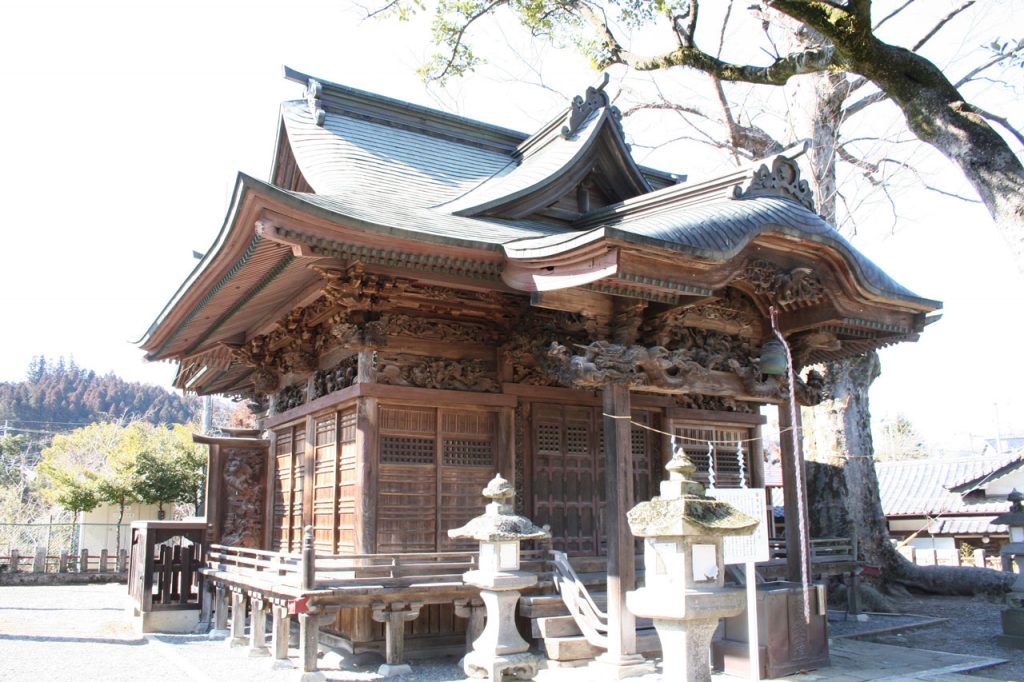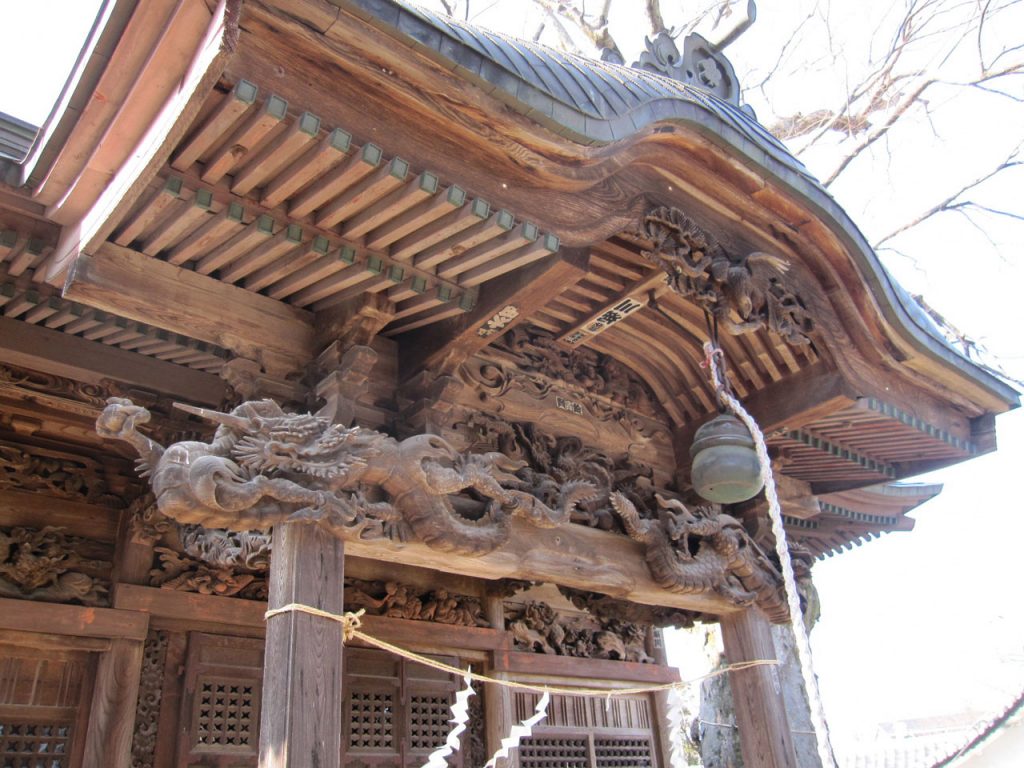
The principal shrine of Shimonita is Suwa-jinja Shinto shrine. While the exact age of the shrine is uncertain, the zelkova tree standing on the grounds is known to be at least 650 years old, and may offer an indication of the shrine’s age.
The shrine was originally dedicated to Hachiman, the deification of the semi-legendary fifteenth Japanese emperor, Ojin, who is believed to have lived in the latter half of the fourth century. When warlord Takeda Shingen (1521–1573) campaigned through the area during the Warring States period (1467–1568), he arranged rites to re-dedicate the shrine to Suwa no Kami, the god of valor and duty. The Takeda family had a long-standing affinity with Suwa no Kami and it is likely that Shingen believed installing Suwa no Kami at the Shimonita-jinja Shinto shrine would aid his war efforts.
The current shrine is a relatively small structure believed to have been built in the late 1830s by master carpenters brought in for the task from the Lake Suwa area in present-day Nagano Prefecture. The building is constructed in the style commonly used by Suwa area builders: a main shrine with an inner shrine behind it connected by rainbow-shaped beams. The gables, eaves, and transoms are elaborately carved with plants and mythical creatures.

Suwa Shrine is part of a network of more than 10,000 Suwa shrines across Japan. The head shrine is Suwa Grand Shrine, one of the oldest shrines in Japan, which is located on the shore of Lake Suwa.



